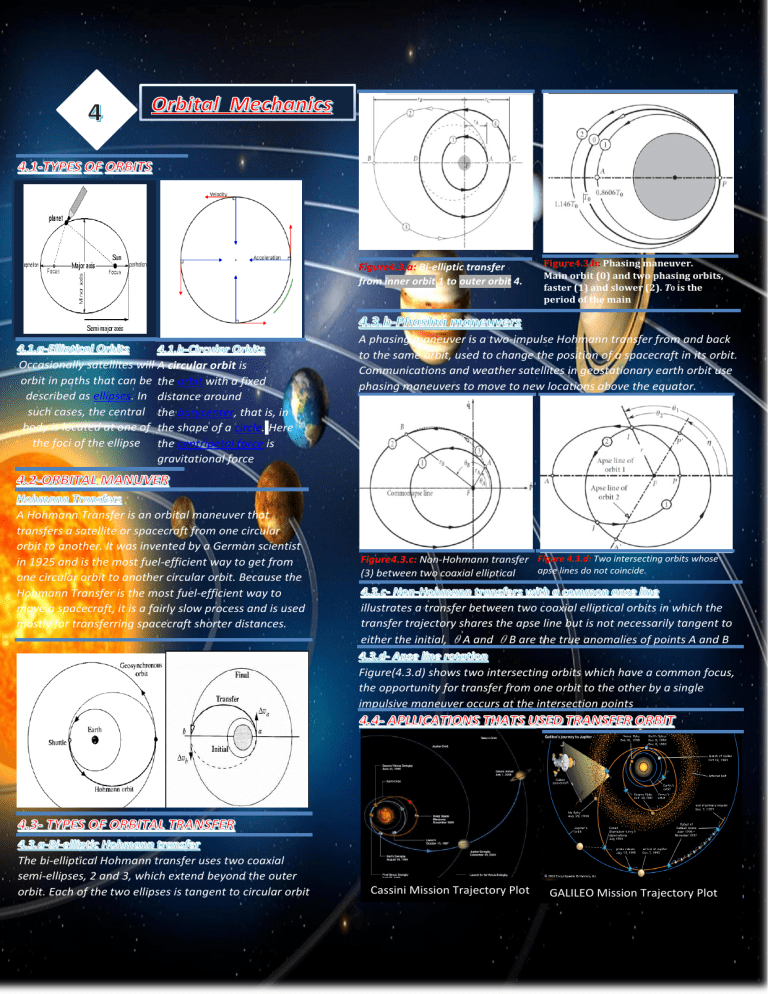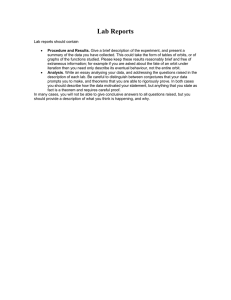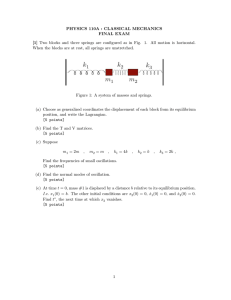
Figure4.3.a: Bi-elliptic transfer from inner orbit 1 to outer orbit 4. Occasionally satellites will A circular orbit is orbit in paths that can be the orbit with a fixed described as ellipses. In distance around such cases, the central the barycenter, that is, in body is located at one of the shape of a circle. Here the foci of the ellipse the centripetal force is gravitational force A Hohmann Transfer is an orbital maneuver that transfers a satellite or spacecraft from one circular orbit to another. It was invented by a German scientist in 1925 and is the most fuel-efficient way to get from one circular orbit to another circular orbit. Because the Hohmann Transfer is the most fuel-efficient way to move a spacecraft, it is a fairly slow process and is used mostly for transferring spacecraft shorter distances. Figure4.3.b: Phasing maneuver. Main orbit (0) and two phasing orbits, faster (1) and slower (2). T0 is the period of the main A phasing maneuver is a two-impulse Hohmann transfer from and back to the same orbit, used to change the position of a spacecraft in its orbit. Communications and weather satellites in geostationary earth orbit use phasing maneuvers to move to new locations above the equator. Figure4.3.c: Non-Hohmann transfer Figure 4.3.d: Two intersecting orbits whose apse lines do not coincide. (3) between two coaxial elliptical orbits. illustrates a transfer between two coaxial elliptical orbits in which the transfer trajectory shares the apse line but is not necessarily tangent to either the initial, θA and θB are the true anomalies of points A and B Figure(4.3.d) shows two intersecting orbits which have a common focus, the opportunity for transfer from one orbit to the other by a single impulsive maneuver occurs at the intersection points The bi-elliptical Hohmann transfer uses two coaxial semi-ellipses, 2 and 3, which extend beyond the outer orbit. Each of the two ellipses is tangent to circular orbit Cassini Mission Trajectory Plot GALILEO Mission Trajectory Plot


